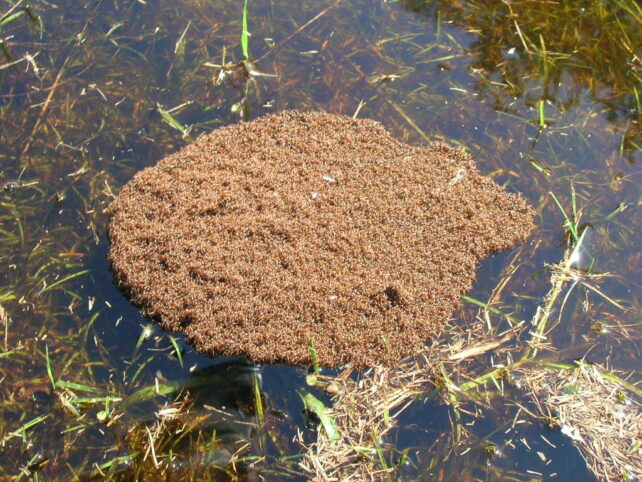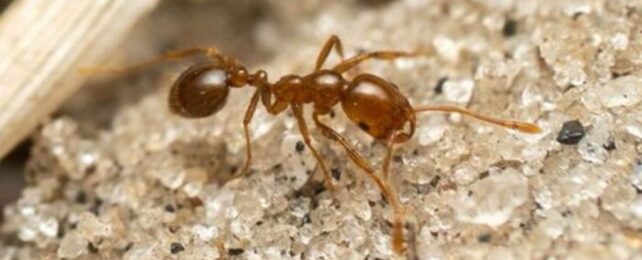Red fire ants have marched one by one into Sicily – the first official sighting of the invasive species in Europe.
If these notorious swarming insects, originally from South America, continue to spread like they have elsewhere, experts worry they could claim the whole continent.
Today, imported red fire ants (Solenopsis invicta) are the fifth costliest invasive species in the world, causing billions of dollars of environmental damage in numerous nations.
True to their name, the species delivers a burning venomous sting, and because these insects run in packs numbering upwards of half a million individuals, they can easily attack and overwhelm prey many times larger than themselves.
As colonies spread, they engulf plants and animals alike, invading and clearing land of precious wildlife.
In Australia, the invasive species is on the brink of surpassing the environmental damage caused by feral cats, wild dogs, foxes, camels, rabbits, and cane toads combined.
"S. invicta is one of the worst invasive species. It can spread alarmingly quickly," says evolutionary biologist Mattia Menchetti of the Institute of Evolutionary Biology in Spain.
"Finding this species in Italy was a big surprise, but we knew this day would come."
Fire ants are like invasive weeds in that they most easily spread to areas already disturbed by humans. As our own species drastically alters the face of the planet, the ants are following in our footsteps.
For years now, scientists have warned that the global spread of fire ants is largely inevitable. Already, in the past century, the species has made it to Mexico, the southern United States, China, Taiwan, Australia, the Caribbean, Japan, and the Philippines.
Most of these infestations, historically, seem to have come from the southern US. With the modern globalization of trade, experts say that fire ants have more chances than ever to hitch a ride around the world in products like sod, nursery plants, hay, or beehives.
All it takes is for one infested package to slip through the cracks.
Already, officials in Europe have intercepted a few contaminated products at the border over the years.
If these ants successfully make it through a port, they can spread kilometers in a short period of time, flying on wind streams or creating rafts with their own bodies to float on rivers or floodwaters. They can even travel underground.

"For decades, scientists have feared that [the ants] would arrive [in Europe]," says Menchetti.
"We could not believe our eyes when we saw it."
Mechentti and colleagues were first tipped off about the fire ants when they were sent a photograph of the species from Sicily. To see the ants for themselves, the team traveled to the region, which sits near the city of Syracuse.
The researchers found 88 nests in a relatively small chunk of land near a river, and these colonies already included thousands of worker ants.
"How the species reached this site is not clear, but no large landscaping or planting projects seem to have taken place over the last few years and it is highly unlikely that it represents the first arrival point and only location in the area," the researchers write.
"The proximity of one of the main cargo harbors of the island, the Augusta port (∼13 km northward), may be relevant for its introduction."
Locals told the scientists they had been getting stings since at least 2019, which means the ants have probably spread to other areas, too.
Comparing the genetics of Italy's fire ants to those elsewhere in the world, researchers say they most likely came from the US, China, or Taiwan to a port in Italy somewhere, before they spread inland.
The researchers estimate that about 7 percent of the European mainland has a suitable climate for the invaders, including half the urban areas in Europe.
"This is especially concerning because many of the cities, including London, Amsterdam, and Rome, have large seaports, which could allow the ants to spread rapidly to more countries and continents," says biologist Roger Vila, also from the Institute of Evolutionary Biology.
Menchetti, Vila, and colleagues are now planning to eradicate as many fire ant nests in Sicily as they can. It's unknown how long they can hold off the species from spreading further.
The correspondence was published in Current Biology.
